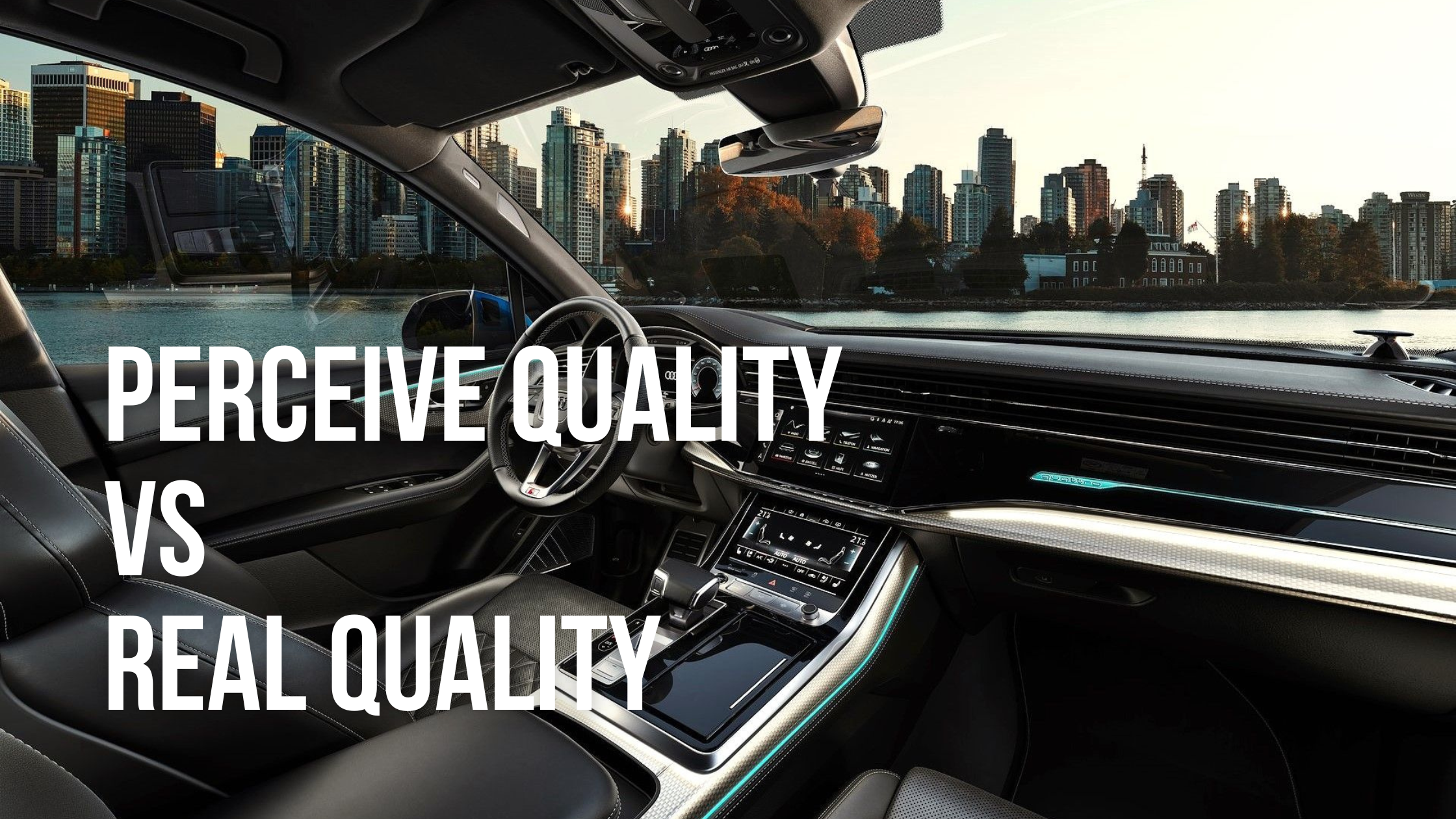Discover the difference between perceived and real quality in cars. Learn how OEMs can balance design and engineering to win customer trust and loyalty.
Perceived Quality vs Real Quality: Where Should Car Makers (OEMs) Really Focus?
When you walk into a car showroom and see a shiny new SUV, what’s the first thing that hits you?
The look. The feel. The vibe.
You haven’t driven it yet. You haven’t checked the mileage or safety ratings. But you already have a gut feeling:
“This car feels premium!”
That gut feeling? It’s called Perceived Quality. But what about what’s inside—engine performance, suspension, real durability?
That’s called Real Quality.
What Is Perceived Quality?
Perceived Quality is all about the car’s first impression—how it looks, feels, sounds, and responds when you first experience it. You judge it based on design, materials, touch, and even the brand reputation.
Examples of Perceived Quality:
- Paint gloss and finish
- LED lights and DRL designs
- Touchscreen responsiveness
- Chrome accents and stitching
- Door “thunk” sound
What Is Real Quality?
Real Quality is what shows up after using the car regularly. It’s the truth behind the shine—how the car performs, how long it lasts, and how reliable it is.
Examples of Real Quality:
- Engine performance and durability
- Fuel economy
- Brake and suspension reliability
- After-sales service
- Interior wear and tear over time
Key Differences at a Glance
| Feature | Perceived Quality | Real Quality |
|---|---|---|
| When it matters | Before or during test drive | After long-term usage |
| Focus area | Design, touch, look & feel | Reliability, safety, durability |
| What it influences | First impressions & buying decisions | Customer satisfaction & loyalty |
Where Should OEMs Focus?
1. Perceived Quality Sells the Car
Customers often make decisions based on the visual and tactile experience. A car that looks modern, feels good, and has a great touchscreen or lighting will easily attract attention and win sales.
2. Real Quality Builds the Brand
Perception gets them in, but performance keeps them loyal. A car that breaks down after a year will destroy trust, no matter how beautiful it looked in the showroom.
The Smart Strategy: Balance Both
Automakers need to invest in both. A sleek design must be backed by solid engineering. A premium-feeling cabin must last for years. That’s how brands like Toyota, Hyundai, and Kia win markets.
Examples of Brand Strategies
- Toyota: Strong on real quality, now boosting perceived quality with new designs
- Skoda: Excellent perceived quality, working on long-term reliability
- Tata Motors: Rapid growth in both areas over the last 5 years
Conclusion: Looks Attract, Experience Retains
Perceived quality gets the customer to fall in love with the car.
Real quality keeps that love alive.
OEMs who master both are the ones that don’t just sell cars—but build lasting relationships.
“A car that looks good but breaks down is forgotten. A car that lasts long but looks dull is ignored. But a car that does both is remembered—and recommended.”
Have Your Say!
Do you choose a car based on how it looks or how it performs? Share your thoughts in the comments below

